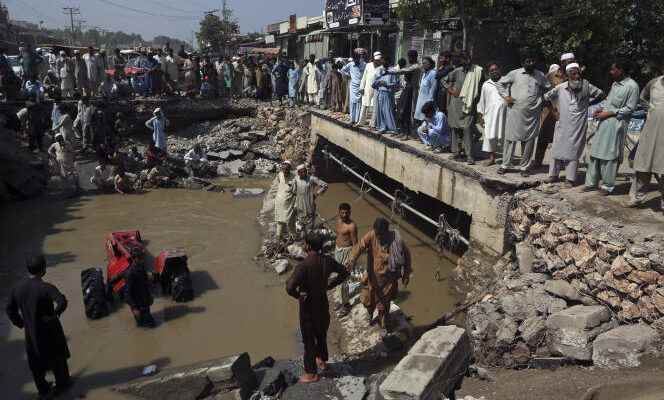Almost a century old, the Sukkur dam extends majestically over 1.6 kilometers between the two banks of the Indus. Under the rays of the setting sun, the stone irradiates the landscape with a warm yellow light. The gates that control the flow of water are hinged between elegant arches. On this building built by the British in 1932 depends the fate of hundreds of thousands of people. It is the cornerstone of one of the largest irrigation systems in the world and should help prevent flooding. Its canals cross the agricultural lands of the Sindh region in southern Pakistan for nearly 10,000 kilometers.
But the dilapidated state of the structure raises fears that it will be, in the future, unable to regulate the floods of the Indus. At the end of August, when torrential rains fell on Pakistan, causing the worst floods in the country’s history, the engineers of the Sukkur dam were in no hurry. Mountain rivers and streams fed dangerously into the ever-growing river. “Luckily, at the time of the peak, it did not rain in the Dera Ghazi Khan region [dans le sud du Pendjab, en amont de Sukkur]otherwise, we would have faced a catastrophe”recognizes Abdulaziz Soomro, the engineer who runs the dam’s control room. The latter testifies to the dilapidated state of the structure that was once the pride of the region. The room is eaten away by time and the decrepit walls seem to be crumbling visibly under the effect of the humidity.
“The dam is still able to handle high floods, but not super floods and it needs to be rehabilitated,” concedes Abdulaziz Soomro. The stone structure is not equipped with the appropriate materials or technologies. Here, the readings and the calculation of the flows are still manual, recorded in a notebook, then entered into a computer. “ Whether this dam collapses, so the whole economy of the region will collapse with it”, warns Sardar Ali Shah, the chief engineer of the dam. Rehabilitation works, supported by the World Bank, and which must be implemented by a Chinese company, are planned for a long time. date and will begin as soon as the water level recedes, assures the manager. But already in 2010, Pakistan was devastated by floods during which 2,000 people died. And critics blame the government for not having drawn conclusions from this disaster.
You have 59.26% of this article left to read. The following is for subscribers only.
